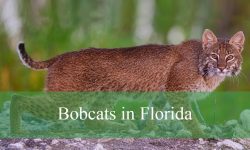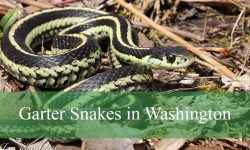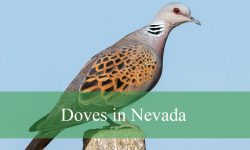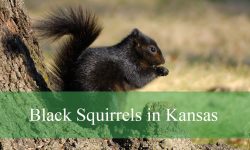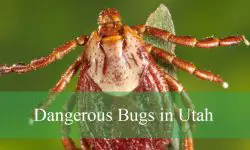Across Texas, reports occasionally surface of people claiming to have seen “wild-looking” cats roaming their neighborhoods—bigger than a housecat but smaller than a full-grown bobcat, with tufted ears and spotted coats. These sightings often spark a recurring question: are bobcats in Texas mating with domestic cats?
While the idea of a wild–domestic hybrid roaming Texas sounds intriguing, the truth is more complex. In this article, we’ll explore what science says about bobcat–domestic cat hybridization, why the myth persists, how to tell a true bobcat from a “bobcat-looking” housecat, and what laws and conservation factors come into play in Texas.
Understanding Bobcats in Texas

Range and Habitat
Texas is home to one of the largest bobcat populations in the United States. Found in nearly every county, bobcats thrive in diverse environments—from dense pine forests of East Texas to open brushlands of South Texas and even the deserts of the Trans-Pecos region.
Bobcats prefer areas with thick vegetation or rocky cover for stalking prey and denning. Their adaptability explains why they can occasionally be found near suburban neighborhoods, golf courses, and farmland.
Appearance and Behavior
Adult bobcats typically weigh between 15 and 35 pounds and measure around 30 to 50 inches in length, including their short “bobbed” tail that gives the species its name. Their fur ranges from tan to reddish-brown with distinct dark spots or streaks.
Bobcats are solitary, territorial hunters. They are active mostly at dawn and dusk, preying on rabbits, rodents, and birds. Though curious, they tend to avoid human contact whenever possible.
The Hybrid Question: Can Bobcats and House Cats Mate?
Genetic Compatibility
At the genetic level, bobcats (Lynx rufus) and domestic cats (Felis catus) are not closely related enough for natural hybridization to occur easily. While both belong to the cat family (Felidae), they are classified under different genera.
Scientific studies of felid chromosomes show that domestic cats have 38 chromosomes, while bobcats have 38 as well, but genetic structure differences and mating behaviors make natural hybridization extremely unlikely. Even though chromosome counts match, species barriers—both behavioral and reproductive—keep them distinct.
Behavioral Barriers
Bobcats are solitary and territorial, with breeding cycles and mating rituals that differ greatly from domestic cats. Bobcats typically breed once a year, between January and March, while domestic cats can breed year-round.
Moreover, bobcats prefer secluded wild areas for mating, while domestic cats live near humans. These differences reduce opportunities for encounters, much less successful reproduction.
Lack of Verified Evidence
To date, there is no scientifically verified DNA evidence confirming a natural bobcat–domestic cat hybrid in Texas or elsewhere. Claims of “bobcat hybrids” often stem from misidentification, as certain domestic cat breeds—like Bengals, Ocicats, and Pixie-bobs—can closely resemble wildcats in appearance.
The Origin of the “Bobcat Hybrid” Myth
Misidentified Cats
Many supposed “bobcat hybrids” are simply large feral cats. Texas has a vast feral cat population, and generations of wild-living domestic cats can develop stronger muscles, rougher coats, and more wary behaviors—traits that make them look “wild.”
Pixie-bob cats, a domestic breed intentionally bred to resemble bobcats, often fuel confusion. Though rumored to have wild ancestry, genetic tests show Pixie-bobs are 100% domestic cats.
Feral Cat Adaptations
Over time, feral cats adapt to harsh environments. In Texas, where temperatures soar and food can be scarce, feral cats tend to grow lean and muscular with mottled or striped fur that provides camouflage—similar to a bobcat’s natural pattern.
These adaptations explain why so many people assume that a “wild-looking” stray cat must be a bobcat hybrid.
Viral Stories and Myths
Social media and local news stories often sensationalize these sightings, labeling any spotted or tufted-eared cat as a “bobcat hybrid.” Without DNA confirmation, these claims remain anecdotal and unscientific.
Comparing Bobcats and Domestic Cats
Physical Differences
Feature |
Bobcat |
Domestic Cat |
|---|---|---|
Size |
15–35 lbs |
8–15 lbs |
Tail |
4–7 inches, black-tipped, short |
10–14 inches, long and flexible |
Legs |
Longer, muscular hind legs |
Proportionate limbs |
Ears |
Pointed with black tufts |
Rounded, little to no tufts |
Behavior |
Avoids humans, solitary |
Social, adaptable to people |
Vocalization |
Growls, screams, hisses |
Meows and purrs |
Behavioral Cues
A true bobcat avoids humans and typically hunts at night or twilight. Domestic or feral cats are more likely to be seen during the day and may linger around homes or barns.
If a “bobcat-like” cat approaches human dwellings, it’s almost always a feral domestic cat, not a wild hybrid.
Rare Cases of Crossbreeding Attempts
Historical Reports
A few anecdotal claims from the early 1900s suggested possible bobcat–domestic cat matings in captivity. However, these were never scientifically verified, and most modern genetic analyses have dismissed them as myth or misinterpretation.
Controlled Studies
Attempts to breed bobcats and domestic cats under laboratory or controlled conditions have failed to produce viable offspring. Even when mating behavior occurs, embryos do not develop successfully due to genetic incompatibilities.
Feral Cat Populations and Contact Zones
In Texas, bobcats occasionally share habitat boundaries with feral cats, especially in rural or suburban edges. While contact might occur at water sources or food dumps, aggression—not courtship—is the usual outcome. Bobcats are more likely to chase or kill a domestic cat than mate with it.
Why People Mistake Hybrids: The Power of Perception
Psychological Factors
Humans are wired to find patterns—even when they don’t exist. A cat that’s slightly larger or more muscular than usual, with spots or a short tail, can easily trigger assumptions of hybrid origin.
Popular Culture Influence
Wild-looking cat breeds like Bengals, Savannahs, and Caracats (actual hybrids of servals and domestic cats) fuel public fascination with wild-domestic crosses. As a result, people project those traits onto any unusual-looking cat they encounter in Texas.
Viral “Proof” Without Science
Online photos claiming to show “bobcat hybrids” often lack verifiable context. Perspective tricks—like photos taken close to the animal—can make ordinary cats look much larger than they are.
DNA Testing and Modern Evidence
Advances in Genetic Research
With today’s technology, researchers can test feline DNA to confirm ancestry with high accuracy. No credible DNA results have ever supported a natural bobcat–domestic cat hybrid in the wild.
Texas wildlife researchers periodically collect tissue samples from roadkill, hunters, and trappers. In every verified study, DNA confirms specimens as pure bobcat or pure domestic cat—not hybrids.
Cat Breed DNA Studies
Modern domestic breeds like Pixie-bobs and American Bobtails were once rumored to descend from bobcat crosses. However, genetic sequencing in the early 2000s confirmed no bobcat DNA in these breeds. Their resemblance results from selective breeding of domestic traits—not hybrid ancestry.
Legal and Ecological Implications in Texas
Wildlife Protection
Bobcats are classified as nongame wildlife in Texas, meaning they are not endangered but still regulated under state wildlife laws. It is illegal to capture or breed them without a valid wildlife permit.
Mating experiments or possession of wild–domestic hybrids (if they were real) could lead to severe legal consequences. The Texas Parks and Wildlife Department (TPWD) enforces these rules strictly to prevent disease transmission and protect native species.
Disease and Safety Risks
Wild and domestic cat interactions can spread diseases like rabies, feline leukemia, and toxoplasmosis. Preventing cross-species contact helps safeguard both wild and domestic populations.
Ecosystem Balance
Texas bobcats play a crucial role in controlling rodent populations. Misidentifying or capturing them under false assumptions of hybridization can disrupt local ecological balance and harm wildlife conservation efforts.
What to Do If You See a “Bobcat-Looking” Cat
- Keep Your Distance: Do not attempt to approach or feed it.
- Take a Photo (Safely): If possible, photograph from a distance for later identification.
- Observe Behavior: True bobcats are shy and will retreat quickly.
- Contact Local Authorities: If the animal behaves aggressively or lingers near homes, contact Texas Parks and Wildlife or local animal control.
- Avoid Spreading Myths: Share verified information rather than speculation online.
The Real Hybrids: Wild Cats That Can Cross with Domestics
While bobcat–domestic cat hybrids haven’t been verified, other wild cat species can cross with domestic cats under certain conditions.
- Servals (native to Africa) can breed with domestic cats, producing Savannah cats, one of the few true wild–domestic hybrids.
- Asian leopard cats cross with domestics to produce Bengals.
- Caracals occasionally hybridize in captivity with domestic cats, producing Caracats.
These examples show hybridization is possible between some species—but not between bobcats and domestic cats due to genetic and behavioral barriers.
Public Fascination with “Wild Hybrids” in Texas
Texas has a long history of fascination with wild animals and exotic pets. The idea of a “bobcat hybrid” appeals to people who admire the wild look of native cats but want the friendliness of domestic pets.
Unfortunately, this fascination sometimes leads to illegal wildlife trade or the breeding of exotic hybrids like serval mixes. Many of these animals end up in sanctuaries when owners realize they cannot handle wild instincts in a household setting.
Education and responsible pet ownership are key to preventing such issues and protecting Texas’s native wildlife.
Conclusion
So, are bobcats in Texas mating with domestic cats? Based on all available scientific evidence, no—they are not. The myth of the bobcat–housecat hybrid persists due to misidentification, viral rumors, and the natural fascination people have with wild-looking animals.
Bobcats and domestic cats may share the same environments, but their genetics, behavior, and reproductive biology make crossbreeding virtually impossible. What people often see as a “hybrid” is almost always a feral or uniquely patterned domestic cat.
Understanding this helps Texans appreciate both species for what they truly are: the bobcat, a resilient and vital predator of the Lone Star State’s wilderness, and the domestic cat, a companion animal that thrives alongside humans. Both are beautiful in their own right—and neither needs the other’s DNA to prove it.


